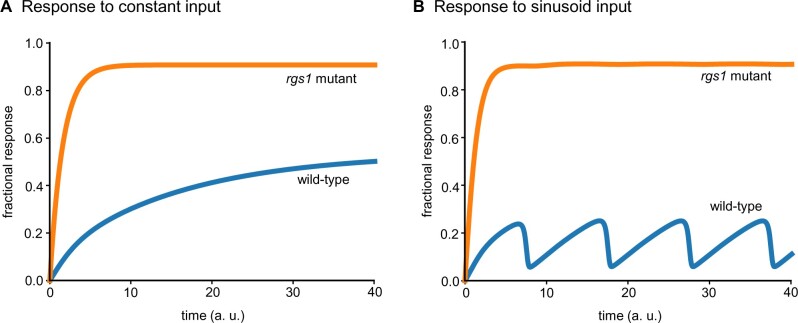Figure 3.
Mathematical model can recapitulate experimental observations that the rgs1 mutant shows mild phenotype for constant inputs and shows strong phenotype for dynamic inputs. A, In response to a step input with constant amplitude, the signaling responses of both wild-type and rgs1 mutant increase over time to their respective steady states. The response of rgs1 mutant is higher than the wild-type, consistent with a role of negative regulator for RGS in G signaling. B, Model behavior for parameters that minimize the difference between the wild-type response and the rgs1 mutant’s response under a constant stimulus and maximize those differences under a sinusoidal input. For both (A) and (B), the best fit parameter set obtained through the evolutionary algorithm is used.

